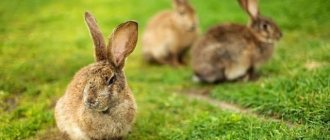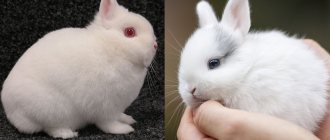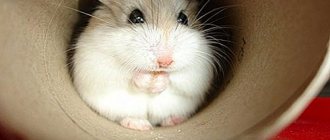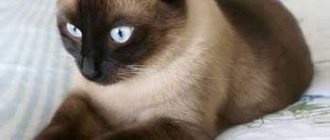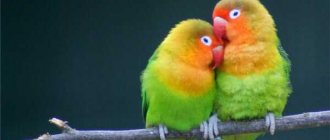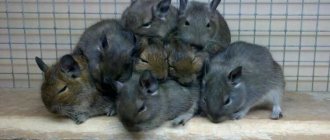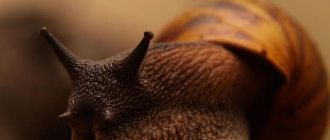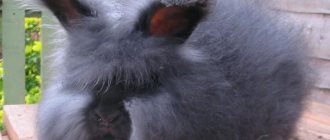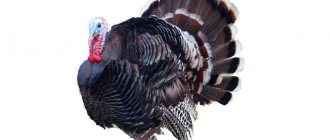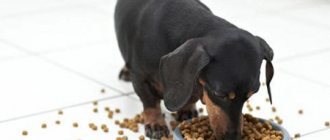Cute, smart, kind, playful decorative rabbits are wonderful pets. The article will tell you everything you need to know to successfully keep these rodents.
Decorative rabbits are descendants of wild ones, brought to Europe from Asia, and already in the 19th century, through selection, turned into tame pets.
Over time, various decorative breeds began to be bred, first in England, then in Holland and Germany.
The wild rabbit is the progenitor of decorative rabbits
Nowadays, decorative rabbits live as pets in many families, and since they are mostly calm and affectionate, children get a lot of pleasure from playing with them.
Breeds of decorative rabbits with photographs and names
Experts are tirelessly working on a variety of decorative breeds of rabbits. What do we have today?
Firstly, rabbit breeds, depending on their weight, are small, medium, and large.
Small decorative rabbits
Secondly, according to “fluffiness” - long-haired, short-haired and with normal (medium) length hair.
Long-haired decorative rabbit
In general, there are more than two hundred breeds, but we will focus on the most common of them.
Colored short-haired dwarf rabbits are very similar in build to their distant ancestors, only the weight is much less (up to a maximum of one and a half kilograms). The color range of this breed is striking in its diversity - about sixty color options. The interesting thing is that initially the colored dwarfs were light gray, then black, and only then did all the others appear.
IMPORTANT: This breed is a godsend if there are small children in the house, as these rabbits are very playful and inquisitive, but not aggressive.
Colored short-haired dwarf rabbit
Fold-eared rams distinguished by hanging short ears and a muzzle similar to a miniature ram. The weight of such an animal reaches three kilograms, medium-length fur of various colors and shades. Surprisingly, these rabbits are very brave, quickly get used to people, are very active, but without unnecessary fuss.
Lop-eared ram
Angora dwarf rabbits are balls of fur jumping on the floor, since neither the eye nor the nose is practically visible in this fluffiness. The fur of these pets is very soft and pleasant to the touch.
Angora rabbit
IMPORTANT: The main thing in caring for the coat is to comb it regularly, and if matted lumps appear, then immediately carefully remove them with scissors.
They lead a calm lifestyle and do not like unnecessary, unjustified movements.
Angora dwarf rabbit
Hermelins , or Polish rabbits are very popular in England, Sweden, Norway and Denmark. They can weigh up to one and a half kilograms. A distinctive feature is their snow-white fur, 2 mm long, and their muzzle resembles the Persian cats beloved by many. The erect ears are small and thin.
IMPORTANT: The character of Hermelins is very eccentric and unpredictable, although these animals are very unpretentious in care and nutrition.
Hermelinas
Hygiene and bathing
Cleaning the cage
If the rabbit hutch is not cleaned, it will become a source of unpleasant odor in the house and cause poor health of the eared pet.
Cleaning is done at least every other day, and preferably daily . During cleaning, the rabbit is allowed to walk or is moved to another cage.
Cleaning consists of a set of simple procedures: removing excess hair and remnants of old food, partially changing bedding and litter, cleaning the drinking bowl and tray. The cage is washed with disinfectants every two weeks, more often in the summer. Experts advise using chemicals more carefully and giving preference to table vinegar to remove heavy stains.
Paper/newspaper and small sawdust should not be used as bedding. Wet litter and its small fragments are dangerous for decorative rabbits. They provoke paw diseases, stomach upset, allergic reactions and conjunctivitis in rodents.
The best bedding for rabbit hutches is hay and large sawdust. The thickness of its layer must be at least 3 cm.
The toilet filler is completely replaced twice a week.
How to trim claws
A rabbit's nails need to be trimmed every 3 weeks.
Once every 3 weeks, the long-eared pet’s claws are trimmed using a nail clipper or tongs, removing 1–2 mm from the tip. No longer needed, blood vessels may be damaged.
If the vessel was touched and blood began to flow, then the damaged claw is treated with hydrogen peroxide.
Bathing
Bathing a rabbit is not an easy job for an owner.
To begin with, it should be noted that the advisability of water procedures for a rabbit is greatly exaggerated . Experts consider this animal to be so timid that it perceives washing as something terrible and experiences enormous stress.
Nature has already taken care of this. First of all, rabbits don't sweat. Secondly, they are very clean themselves. Thirdly, additional water procedures disrupt the protective lubrication of the skin, which has a bad effect on the quality of rabbit fur.
Therefore, the owner should think five times before bathing his eared pet.
Indications for swimming are:
- extreme pollution;
- overheat;
- diarrhea.
A dwarf decorative rabbit can be washed in a sink or basin. The water should be slightly warmer than room temperature. You should not wet the whole rabbit. It is better to limit yourself to contaminated areas only. You should be especially careful with your ears and nose - water should not get on them.
Considering that the rabbit will not be delighted with water procedures, resistance on his part is expected. You will need an assistant to hold the animal or pour water from a ladle while someone else holds it.
It is advisable not to use detergents. But, if you couldn’t do without them, then you need to wash them off with special care so that nothing is left on the fur. Otherwise, the animal may become poisoned by licking itself.
Use a towel for drying. Not a hair dryer! Noise is an additional source of stress, and hot air can burn delicate skin. It is enough to wrap a wet baby in a soft towel and hold him on the sofa or in your arms until he dries.
Names for rabbits girls and boys
The pet's name should be short and sonorous, then he will quickly learn it.
IMPORTANT: At first, as soon as the rabbit begins to respond to the call, you need to encourage it with a treat.
Many owners choose a nickname based on the obvious distinctive features of the rabbit: color, habits, character traits:
- An albino pet , if it is a boy, can be called Bely, Snezhok, White , if it is a girl - Blonda, Snezhka, Anzhi, Belyan
- For gray rabbits, suitable names are Gray, Smokey, Brass - for boys, Mini, Smoke - for girls
- A restless baby can be called Shustrik, Dashing , if it is a boy, but if it is a girl - Naughty, Shursha, Shusha
Some rabbit owners name their pets after their favorite characters from feature films and cartoons:
- Elsa, Feona, Jasmine, Gloria, Bella, Hera for females
- Nemo, Marty, Funtik, Kuzya , Simka for males.
There are owners who humanize their furry and call boys with male names - Vanka, Max, Zhorik , and girls with female names - Lana, Nora, Shura .
A decorative rabbit will quickly get used to its name and learn to come running when called.
IMPORTANT: Once a pet begins to respond to its name, it must not be changed under any circumstances.
How to name a pet
For breeding decorative rabbits, the name is the calling card of the pedigree, and it is chosen strictly according to the first letter of the father’s name. With nicknames for other rabbits that are not burdened by a family tree, owners are free to act in accordance with their taste and imagination.
Often the basis is taken from the appearance or character of the pet - Ushastik, Fluffy, Ryzhik, Bandit, Ottoman. As a rule, owners prefer short, sonorous nicknames that are easy to pronounce and easier for the pet to remember - Fima, Monya, Asya, Zheka, Zaya.
How long do decorative rabbits live?
Life expectancy depends on the breed, health, care and nutrition. But there are very specific statistics: large rabbits live 4-5 years , dwarf rabbits live up to 8 years , lop-eared ones live longer than pets with erect ears. The other half also prolongs the rabbit's eyelid.
Fold-eared decorative rabbits live longer than straight-eared ones
Keeping and caring for a decorative rabbit at home
The place should not be in direct sunlight or in a draft. The most acceptable temperature is 18-20˚C.
IMPORTANT: During the heat, you need to cool your rabbit's ears, then he will feel better. You should not grab a rabbit by the skin and ears - this can even lead to the death of the pet.
Be sure to clean the litter box every day.
Decorative rabbit at home
General content tips
Below we will look at the most important information regarding keeping dwarf rabbits at home.
Temperature
Decorative rabbits are very sensitive to heat. If the air in the room where the cage is located is heated to 25 ℃ or higher, the animal may suffer heatstroke . The cage should not be located in a place exposed to direct sunlight, otherwise your pet will also be at risk of overheating. In addition, the animals are “afraid” of too high air humidity (above 60%) and drafts. They feel best at a temperature of 18-21 ℃ and a humidity of 40-50%.
Let us note one more interesting nuance. Decorative rabbits do not have sweat glands, and their long ears are responsible for heat exchange in the body. If your pet is hot, you can always help him cool down a little. To do this, gently wipe the ears with a soft, clean cloth soaked in cool water. Some rabbit breeders put a plastic bottle of frozen water in the cage, install mini-pools, and periodically spray or bathe the animals.
The ears of representatives of decorative breeds are not large enough to prevent them from overheating and possible heat stroke
Precautionary measures
Owners of dwarf rabbits should be aware that these animals have a rather fragile spine and it is important to ensure that the animal does not jump from great heights. The rabbit must be held firmly when it is in your hands. Some individuals try to open the cage door on their own, so it is better not to place the “dwelling” high from the floor.
To prevent the rabbit from getting injured while walking around the apartment and causing damage to your property, the animal must be constantly supervised, isolated from other pets (cats, dogs), and controlled communication with small children who are very curious and can harm the animal by dropping or grabbing it. him behind a vulnerable spot, for example, behind the ears.
Try to protect your furry pet from loud noise and harsh sounds. Being in a constant state of stress, the animal can get sick and even die.
Decorative rabbits are quite smart. They are able to respond to their name and willingly go into the arms of people to whom they get used. These animals like to be stroked on the head and back, but it is better to avoid contact with the animal’s chin.
Rabbits are active in the evening and at night, and during the day, as a rule, they rest
Hygiene
Decorative rabbits are clean animals and independently clean their fur from dirt. Bathing them is not recommended, but it is acceptable if the animal has an upset stomach. Once you decide on this procedure, make sure that water does not get into your pet’s ears. After bathing, try to dry it immediately and protect it from drafts.
A layer of sawdust or straw must be placed on the bottom of the cage (you must ensure that it is dry at all times). Complete replacement of litter should be carried out at least once every 2 weeks. The tray should be washed every day, otherwise the fluffy will start going to the toilet in different parts of the cage, which will lead to an unpleasant odor.
Don't forget to trim your pet's nails periodically to prevent him from injuring himself. To carry out this procedure, it is better to use special nail clippers.
Nails need to be trimmed at least once every 3 weeks.
Rabbits quite often eat the products of their vital activity, which is called coprophagia (there is no need to worry about this - this is an absolutely normal phenomenon). They have two types of feces: hard, dry pellets and soft droppings. It is the latter that the animals eat, since it is not completely digested food (not fully digested succulent and roughage). It is soft feces that contain a huge amount of amino acids, vitamins and nitrogenous substances that are important for the animal.
Coprophagia in dwarf rabbits is explained by the peculiarities of their digestive system. During the first cycle of food digestion, the animal cannot get everything valuable and useful from it, so it starts this process in the second round.
Walks
Decorative rabbits need movement. As a rule, there is very little space in the cage, so the animals must be let out for walks around the apartment. Preferably daily.
Your pet should not be left unattended. He can get scared and hide in any crevice or corner. In addition, each animal has its own instincts. In rabbits, they manifest themselves in the form of a desire to gnaw on everything that comes along the way. This could be shoes, wires, and so on.
A spacious enclosure will allow pets not only to have fun, but will also help keep the owners’ belongings safe
If you want to raise an affectionate animal, you should periodically pick it up (it is better to do this while sitting for the pet’s safety), stroke it, communicate with it and call it by name. The animal should get used to you. This will take some time, but in the end you will raise a fluffy who will respond to his name and willingly go into your arms.
Nutrition
The main product in the diet of a decorative rabbit is hay. You should choose it carefully: it should be dry, pleasant in smell, and free of mold. Don't forget to regularly fill the manger with hay. Furry pets also love various grain and succulent foods. The bowl for such food should be heavy so that the animal does not throw it around the cage.
High-quality hay must be present in the daily diet
Make sure your animal always has water . It is best to use an automatic drinker as a container for it. Rabbits can be given regular tap water, having first settled it or passed it through a special filter. It is strictly forbidden to give your pet mineral water, as it usually contains a large amount of salts, which provokes the occurrence of urolithiasis in all breeds of decorative rabbits.
The animal must be provided with the necessary vitamins and microelements . You can purchase special foods and supplements at pet stores. To ensure a balanced diet for rabbits, fresh or dried fruits (apples and pears) and carrots are introduced into their diet. Rabbits also eat cabbage with great pleasure, but it should be offered in small quantities. It is also recommended that these animals be given twigs of apple, birch, currant, rowan and pear to chew on.
Decorative dwarf rabbits and lop-eared rabbits: maintenance features
The cage for such rabbits should be about 0.5 m x 0.7 m, if possible with a house (to ensure the pet is safe), food and drinking bowls should be secured.
Keeping a lop-eared decorative rabbit in a cage
IMPORTANT: It is imperative to let the rabbit run around and trim its claws in a timely manner.
Natural habitats of rabbits
The historical homeland of long-eared animals is considered to be northwestern Africa, Italy and the south of France.
Spain is worth mentioning separately. It is believed that Roman soldiers transported the rabbits from Madrid to Rome, and from there they bred all over the world. Today these rodents can be found in every corner of the country.
An interesting story connects rabbits with Australia, where rodents have become peculiar destroyers of the ecosystem. At one time, the colonists considered these animals the most profitable species for breeding and brought a certain number to the mainland. The rabbits multiplied too quickly, destroying the already meager green reserves, leaving the indigenous animals without food. Many of Australia's herbivores are on the verge of extinction due to small furry animals.
Today, the largest number of rabbits in natural conditions can be found on both continents of America. Western and Central Europe, Scandinavia and the Mediterranean are also considered the habitat of rodents. It is believed that if the reproduction of these animals is not restrained, the planet will be completely populated by them in a couple of years.
How to choose a cage, house, toys for a decorative rabbit?
The cage should not be very large: for small and medium breeds - up to 1 m2, for large breeds - up to 140 cm2. The cage must have a toilet, drinking bowls, and feeders.
Equipped cage for decorative rabbit
For dwarf rabbits and pregnant rabbits, a house should be installed in the cage. The cage should be in a quiet, bright place.
You can purchase a cage for a rabbit at a pet store or you can build your own house for the animal.
A rabbit cage can be purchased at a pet store.
To prevent the rabbit from spoiling anything, he needs to buy toys and play with him. A ball with a rattle, a linen rag, a box of moves - ideal for entertaining your pet.
Decorative rabbits love to play
Cage equipment
You can buy ready-made cages or build your own. To do this you will need metal mesh, plywood, boards and slats. The approximate size of the housing for two individuals is 60x70x50 cm. The floor in the cage is made of mesh or made of slats with an interval of 1–1.5 cm. The front wall is also made of mesh, the back and sides are solid. Cells can be arranged in several tiers. If the building is located on the street, it is necessary to make a roof or canopy and provide insulation for cold weather. Straw, sawdust or spruce branches are laid on the floor.
The rabbitry is located on the site so that the front part of the cages faces southeast. In winter, the cages are moved to a heated barn. If they remain outside, they are insulated with polystyrene foam, mineral wool, grass mats and other heat-insulating materials.
What to feed a decorative rabbit: food?
Since food is digested quickly in these rodents, they must eat all day long.
The menu should include solid feed, vegetables, fruits, berries, herbs, tree branches (for grinding teeth), hay, vitamins, mineral and animal supplements.
The menu of a decorative rabbit should be varied
Interesting facts about domestic rabbits
There is information about these animals that can surprise:
- The rabbit Darius from Great Britain was listed in the Guinness Book of Records as the largest individual. Its weight is 22 kg and its length is 129 cm.
- Animals are able to purr like cats if the life of decorative rabbits is comfortable.
- You cannot lift a rabbit by its ears.
- Rodents' teeth grow throughout their lives. If they overgrow, mucosal injury may occur, so they need to be provided with food with which to sharpen them.
- The animal's viewing angle is 360°.
A domestic rabbit can become a faithful family friend: playful, curious, affectionate. Keep in mind that the animal has its own character, which must be taken into account so that it does not get offended. Proper care, care, disease prevention, healthy nutrition - all this should be provided by pet owners who wish their pet a long life.
How to toilet train decorative rabbits?
The principle is the same as with cats and small dogs. You need to buy a tray, pour sawdust into it, and as soon as a puddle appears on the floor, scold the baby and take it to the tray, without ceasing to blame him. Then moisten the sawdust with urine so that he can smell it.
IMPORTANT: Rabbits are smart enough to quickly figure things out and learn to go to the toilet in one place.
It will be possible to train a decorative rabbit to the toilet quite quickly
Why do they have rabbits?
There are still ongoing debates about whether a farm rabbit can be considered decorative or not, because the breed of these animals is often the same, but the purpose and conditions for keeping domestic rabbits differ. If you decide to breed a domestic rabbit for slaughter, you will need a farm or pens, special enclosures for pregnant females, and regular suppliers of food in large quantities.
You should also regulate a certain number of legal acts and be sure to acquire a personal veterinarian who can notarize the suitability of meat and skins for sale. Rabbit farms are highly profitable due to the animals' rapid fertility and the value of their fur. The domestic rabbit is also a source of dietary meat; it is recommended for people with heart and kidney diseases. These animals are not too expensive, the price comes back after the first litter.
If you need a domestic rabbit as a pet, a simple but comfortable cage, mowed grass in the meadow and food from a pet store are enough. It should be remembered that a rabbit is a pack animal, and if you buy only one eared dog, without proper attention, it can become sad.
When buying a new pet, no matter for what purpose, you should check the animal’s documents and general appearance. The rabbit's fur should be thick, without bald spots, and its eyes should be black and shiny. It is important to check your pet’s teeth and paws: the incisors should not be crooked and the knees should not be turned out.
Domestic rabbits are very active animals and can make a mess if you let them roam around the apartment. The animal should be protected from wires and sharp objects: the rodent may not be able to resist the temptation to try them on its teeth. Otherwise, caring for the animals is quite simple, and the dwarf rabbit, which looks like a mini version of the farm rabbit, will appeal to many rodent lovers. What types of rabbits are suitable as pets and how to keep them?
Do decorative rabbits have fleas?
Rabbits are no exception in this regard, and the danger is that they are transmitted to other animals and humans.
IMPORTANT: You can quickly get rid of fleas by treating your rabbit with special antiparasitic drugs that are sold in pet stores.
But it’s better not to let it get to that point, but to use a collar or prophylactic drops 2-3 times a year.
Fleas from decorative rabbits can be transmitted to other animals
Difference from sterilization
Castration of rabbits is an operation as a result of which they are deprived of the opportunity to have offspring. Spaying rabbits is sometimes called neutering, but there is a significant difference between the two. Since sterilization does not involve resection of any organs, the ability to reproduce disappears, but the natural desire to mate remains.
Sterilization of rabbits involves bandaging. In this case, the reproductive organs are ligated - in females the fallopian tubes, and in males the seminal ducts. The behavior of animals during certain periods remains aggressive and unpleasant.
Unlike sterilization, castration of rabbits immediately solves all problems that have arisen. The result of castration of rabbits is the absence of pregnancy. Their behavior also changes - they stop falling into a state of hunting, that is, the natural desire to mate disappears. Even during the mating season, their behavior continues to remain calm.
The essence of castration of rabbits is to cut off the ovaries in females and the testicles in males. You can have your rabbit castrated by professionals or by yourself.
A decorative rabbit has red urine
Owners should not panic, as the color range of rabbit urine is very diverse: from light yellow to brown.
This phenomenon is explained by the presence of plant pigments in the urine and does not harm the pet’s health.
Your kitten rabbit may have red urine
Diseases of decorative rabbits
There is no point in describing all diseases, since there are a lot of them, so we will characterize the main ones:
- viral hemorrhagic disease (VHD) , which affects rabbits from two months to six years, cannot be cured. The animal's temperature rises, its lips turn blue, breathing slows down, blood flows from the mouth and nose, and diarrhea begins. There is no chance to save the rabbit, since the disease has been practically unstudied, and there is currently no treatment. Prevention is important - vaccination
- Gastrointestinal stasis can kill a pet, as pathology occurs in the functioning of the intestines. The cause may be a lack of hay in the diet or wool accidentally swallowed. The rabbit becomes lethargic, chatters its teeth, does not eat, and does not defecate. With such severe symptoms, you should immediately contact a veterinarian, who will prescribe an enema, massage, and appropriate medications. If this does not help, you can operate on your pet, but it will be difficult for him to recover and usually the animal dies
- urinary dermatitis is characterized by hair loss in the groin area and on the hind legs, inflammation and redness of the skin occurs. Steroid drugs are prescribed for treatment
- Coccidiosis is an infection by parasites transmitted through feces. This disease is characterized by weakness, bloating, and refusal to eat. It is necessary to treat immediately to avoid infection of other organs.
- Myxomatosis , transmitted through fleas and lice, like VGZ, is fatal and cannot be treated. The animal stops eating, the eyelids swell, very painful blisters appear, and within a week death occurs.
If signs of illness appear, the decorative rabbit should be shown to a veterinarian
Disease Prevention
Like people, rabbits suffer from infectious and non-infectious diseases. Most often they suffer from respiratory diseases of the respiratory tract and stomach upset. The symptoms are the same: runny nose, sneezing, redness of the mucous membranes, general weakness during a cold, and loose stools, sometimes with blood, due to gastrointestinal problems. The disease can be triggered by improper keeping of pets: dampness, drafts, crowded cages, poor nutrition and improper care.
To prevent the most dangerous viral diseases, it is necessary to get vaccinated on time. In addition, new animals cannot be immediately added to the main herd. They must be quarantined for three months.
Every business requires knowledge, patience and desire. Enjoy rabbit farming, and we will share the necessary knowledge with you.
How to determine the sex of a decorative rabbit?
- Before the age of two months, this is almost impossible to do, and there is no need if the baby rabbit is purchased from experienced rabbit breeders
- If there are no sufficient guarantees of the sex of the furry rodent, it is better to check for yourself. To do this, the animal needs to be given a semi-lying position by grabbing the withers with your right hand and placing it on its tail.
- With your left hand, stretch the skin in the genital area and painlessly press with your thumb and forefinger along the genitals. If everything is done correctly, primary sexual characteristics will be evident
It is very difficult to determine the sex of a decorative rabbit less than two months old.
Queen cell
A pregnant rabbit needs a special room, a queen cell, to give birth and hide newborn rabbits from prying eyes. Usually this is a small extension to a cage measuring 40x40x30 cm, into which a round hole leads. The queen cell looks like a hole. But the roof still needs to be made removable in order to control the behavior of the young mother, remove stillborn babies, and see if everyone has enough milk. A few days before giving birth, the female rabbit lines the bottom of the queen cell with her down. No assistance required during childbirth. She will also take care of the newborn rabbits herself. You just need to provide her with enough quality food and fresh drinking water. If the mother feels a lack of one or the other, she may eat her offspring.
How to determine the age of a decorative rabbit?
If for some reason the age of the purchased pet is not known, then by certain signs it can be approximately determined:
- The ribs of a pet up to six months are quite soft
- yellow teeth with spots that lose whiteness from the age of one year on a rabbit indicate the venerable age of the animal
- Long, curling nails are also a sign of aging
- swollen drooping eyelids also do not detract from the age of the rabbit
You can determine the age of a decorative rabbit by its teeth
Vaccinations for decorative rabbits: what and when to do?
Vaccination is an important point in caring for rabbits, even if he does not go outside.
IMPORTANT: Two vaccinations are required: against myxomatosis and against viral hemorrhagic disease .
If you plan to take your pet abroad, you will also need to be vaccinated against rabies , although rabbits do not get it.
The rabbit is vaccinated for the first time when it is one and a half months old, but the weight must be at least half a kilogram, otherwise it cannot be vaccinated.
Vaccination of a decorative rabbit
In most cases, a complex vaccination is given against two diseases at once. If there is none, then first you need to be vaccinated against myxomatosis, and after a week and a half - against hemorrhagic disease.
The next scheduled vaccination should be in three months, and then every six months.
Complex vaccine for decorative rabbits
IMPORTANT: We must not forget that before vaccination it is necessary to “drive away worms”.
Walking and playing with your pet
Exposing your rabbit to the fresh air is good for its health and fitness.
A pet cannot sit in a cage all the time. For normal development, he needs full movement. Otherwise, the animal begins to mope, suffer from nervous and immune disorders, and joint diseases.
A decorative rabbit needs daily 20-minute walks around the apartment under the careful supervision of the owner..
Rabbits are playful creatures. You should use this and offer him toys. If there are none, the rabbit will find them himself. And the owner is unlikely to like such resourcefulness.
The cage is left open during the walk so that the pet can return to it at any time.
It is believed that rabbits that receive a sufficient dose of physical activity through regular home walks do not need street promenades. But if the owners wish, then nothing prevents them from taking walks in the fresh air with their pet from time to time.
For these purposes, clean and safe places are chosen - without dust, debris, poisonous plants and ticks. Street walking is carried out only with a harness.
What can a decorative rabbit do and what can’t it?
Every rabbit owner should clearly understand that improper nutrition can kill the pet.
The main food of a decorative rabbit is hay. You can diversify your diet as follows:
- sometimes indulge in special grain mixtures, nuts, sprouted grains
- offer twigs of cherry, apple, birch
- pieces of fruit and vegetables
- Can you give mineral stone?
- It's good to please your rabbit with a dessert made from dandelion leaves.
Decorative rabbits can be offered fresh fruits and vegetables.
The following is strictly prohibited:
- flour baked goods and any sweets
- overseas fruits and vegetables
- any spoiled food
- grass and branches collected from the edge of the road
Nutrition
In summer, rabbits are fed mainly with forbs, leaves of bushes and fruit trees, vegetables, fruits, and root crops. And also roughage: grains, legumes, compound feeds. The grass should be given pre-dried to improve digestion. Potatoes, carrots, beets, and celery must first be washed well.
The basis of the eared diet is hay, food, fruits and vegetables, twigs and clean fresh water.
There should always be enough hay in the hay barn. Feeding dry grass helps normalize digestion.
Special food is very important for animals, as it saturates the animals and contains the necessary nutrients. It comes in the form of grain food for rodents, or as a combined food. Compound feed is often chosen for feeding eared animals, as it promotes the growth of small individuals. Feed is given one tablespoon three times a day. Adults are given twice a day. The animals eat the tasty grains first without touching other parts of the feed. But you should not remove them immediately; it is recommended to wait until the pet has eaten the entire portion.
Teeth wear down on tree branches and solid food particles. Rabbits can be treated to branches of pear, poplar, willow, apple, and birch. The branches must first be washed and dried.
Salt and vitamin stones are sold in stores. They are useful to give to rodents. They ensure the supply of vitamins and minerals to the animals’ bodies.
There should always be boiled water in the drinking bowl. It needs to be changed every day.
Rabbits are given fresh plants: dandelion, alfalfa, yarrow and others. First, the pet is given a leaf to try and the body’s reaction to the new food is observed. If your pet liked the food and accepted it well, then you can give more of this herb next time. If your pet has problems with stool, then there is no need to give this plant.
Chalk and salt are needed all year round. 1–2 g of chalk and 0.5–1 g of salt per individual per day.
It is important for a rabbit breeder to know how to care for rabbits that have recently been taken from their mother. They still have a weak, not fully formed digestive system. Therefore, they cannot be fed with roughage and dry food, grains, legumes, and hay. It is better to give young animals tender young grass, vegetables, and boiled potatoes.
Rabbits' food should not contain cabbage and beets. But the animals like apples, pears and carrots.
Why do decorative rabbits bite?
There are times when a cute fluffy turns into a ferocious predator and desperately tries to bite off the hand that feeds him. What is the reason?
- The period of puberty has arrived . The problem can be solved simply: get a second rabbit or hold firm until the hormonal aggression passes
- small personal space , which he is forced to protect from everyone, and the best way of defense, as we know, is an attack. It might help, if possible, to buy a new cage.
- Vision problems in a pet that confuses the owner’s leg or hand with something dangerous for him. In such a situation, you need to be patient and show more affection, and not make sudden movements when in contact with the rabbit.
- just don't like the smell that comes from the owner. You should try not to use perfume while interacting with your pet.
- The rabbit was taken from another family where he was treated poorly . It is important to be patient and, together with the fluffy, overcome mistrust
- Decorative rabbit bites while feeding
Breeding
The issue of breeding rabbits is relevant only for exotic breeds
The issue of breeding decorative rabbits is relevant, as a rule, only for owners of rare, elite breeds and those who sell them.
How to determine gender and when puberty begins
Sex differences in rabbits become more obvious with age
Determining the sex of a pet is the first thing an inexperienced breeder will have to deal with. Here are some simple tips.
- The smaller the rabbit, the more difficult it is to determine its gender. Sexual characteristics become more obvious by 2 months of age;
- Boys are usually smaller in size than girls of the same age;
- The head of a male decorative rabbit is short and square in shape, while that of a female is elongated and narrow;
- Differences in genital organs.
To examine the genitals, the animal turns over onto its back. Carefully, moving away from you, spread your hind legs to the sides. The tail is pulled behind the back. Use the pad of your finger to apply light pressure to the area near the base of the tail. The female will have a visible genital slit. The male has a round opening, more distant from the anus than the female. Also, an older male will have noticeable testicles - pink, elongated swellings. If you press on the abdomen in the area of the genitals, a pink or white organ will become noticeable - the final proof that this is a boy.
Puberty in rabbits occurs at 7-8 months of age, but sexual play begins much earlier - at 4 months. During this time, experienced breeders advise giving the animal a toy of a suitable size “for training.”
The following changes in behavior indicate that they are ready to reproduce:
- "marks" of the territory;
- increased aggressiveness;
- excessive activity;
- digging;
- desire to “build” a nest, raking litter;
- scattering of feed and feces.
Mating
Rabbits get pregnant very easily
For mating, the female is placed next to the male. If you do the opposite, the gentleman, instead of engaging with the lady, will begin to study the new cage and the environment around him, ignoring his direct responsibilities.
After the first mating, the female is not immediately taken away “from the guests”, but is given another hour or two for repeated matings. A day later, the lady again goes to the gentleman.
If the female rabbit is not ready to mate, she will run away from the male and not give in, angrily thumping her hind legs.
Pregnancy
There are 3 ways to determine whether a rabbit is pregnant or not.
Method number 1 - Attempt to re-pair.
Pregnancy of a female is determined by her indifferent attitude towards the male. When trying to mate, she will resist, will chase the gentleman and growl at him if she is already pregnant.
But this sign does not always work. There are female rabbits who are happy to mate while being 100% pregnant.
Method number 2 - Palpation of the abdomen
Feeling the belly of a potential mother - the rabbits feel like small balls.
This is done extremely carefully. And if there is no experience, so as not to harm future offspring, it is better to entrust palpation to a specialist.
Method number 3 - Observation of behavior
A pregnant rabbit has an increased appetite. This symptom becomes especially obvious in the last weeks of pregnancy.
But this sign also fails. There are female rabbits who do not show an increase in appetite and even begin to throw food out of the feeder.
Pregnancy lasts about a month. During this period, it is important to provide the expectant mother with high-quality and balanced nutrition with a high calcium content. Rest is also necessary for a pregnant rabbit. Her cage should be located in a quiet place, away from the male's cage.
A week before the expected birth, the rabbit should not be allowed to go for a walk. The cage should be equipped with a house, if there was none before, and the cage itself should be disinfected.
The mother's behavior will signal the approaching birth. She will begin to make a nest - putting hay in her mouth, plucking the fluff on her chest.
If everything goes well, the mother rabbit will give the world 2 to 5 decorative rabbits.
The degree of fatness of newborn rabbits determines their health. The baby's tummy should be tight, without folds.
How to care for newborn rabbits
This is how helpless newborn rabbits look
The ideal option is natural, conceived by nature, when the mother herself feeds her offspring. But there are unforeseen circumstances in the form of the death of a rabbit during childbirth or the maternal instinct not manifesting itself. In this case, artificial milk for kittens or puppies can replace mother's milk. It is considered the closest in composition to rabbit.
Cow's milk, even skim milk, is completely unsuitable for feeding newborn rabbits. It is too poor in composition and nutritional value for this.
Milk is given to babies using a pipette pulled onto a syringe without a needle.
If the mother’s milk supply is fine, then the offspring are not taken away from her until 1.5 months of age.
Decorative rabbits: reviews
Olga: They gave me a decorative rabbit, but after a few days it began to bite heavily. I still didn’t understand why he behaved this way, so I had to get rid of him.
Tatyana: I really want to have decorative rabbits, but I’m afraid of their specific smell. I'm thinking about purchasing a dwarf rabbit. I think the smell from a small animal will not be so strong.
Vasily: We bought a decorative lop-eared rabbit as a gift for our daughter 2 years ago. During this time, our Tishka became a full member of the family and everyone’s favorite. I can say with confidence that a decorative rabbit is an ideal pet.
Is it possible to grab it by the withers?
If you look at the photo below, you will see that it is also not recommended to take an animal by a fold of skin on the neck or back. This is not as dangerous as in the case of the ears, but there are other, safer ways.
The fact that this method is more comfortable for the animal is evidenced by the fact that, as a rule, in this situation it does not break out or scratch. Most often, the crawl simply hangs down, while its neck and head are pulled back somewhat.If you use this method of lifting, then you must support the crawl’s body in the sacrum area with your second hand.
By the way, it is by the withers that the rabbits are carried by their parents. Some rabbit breeders advise holding animals with both hands at the same time: one in the neck area, the other in the back area. This way it will be in a horizontal position, and the body weight will be evenly distributed.
